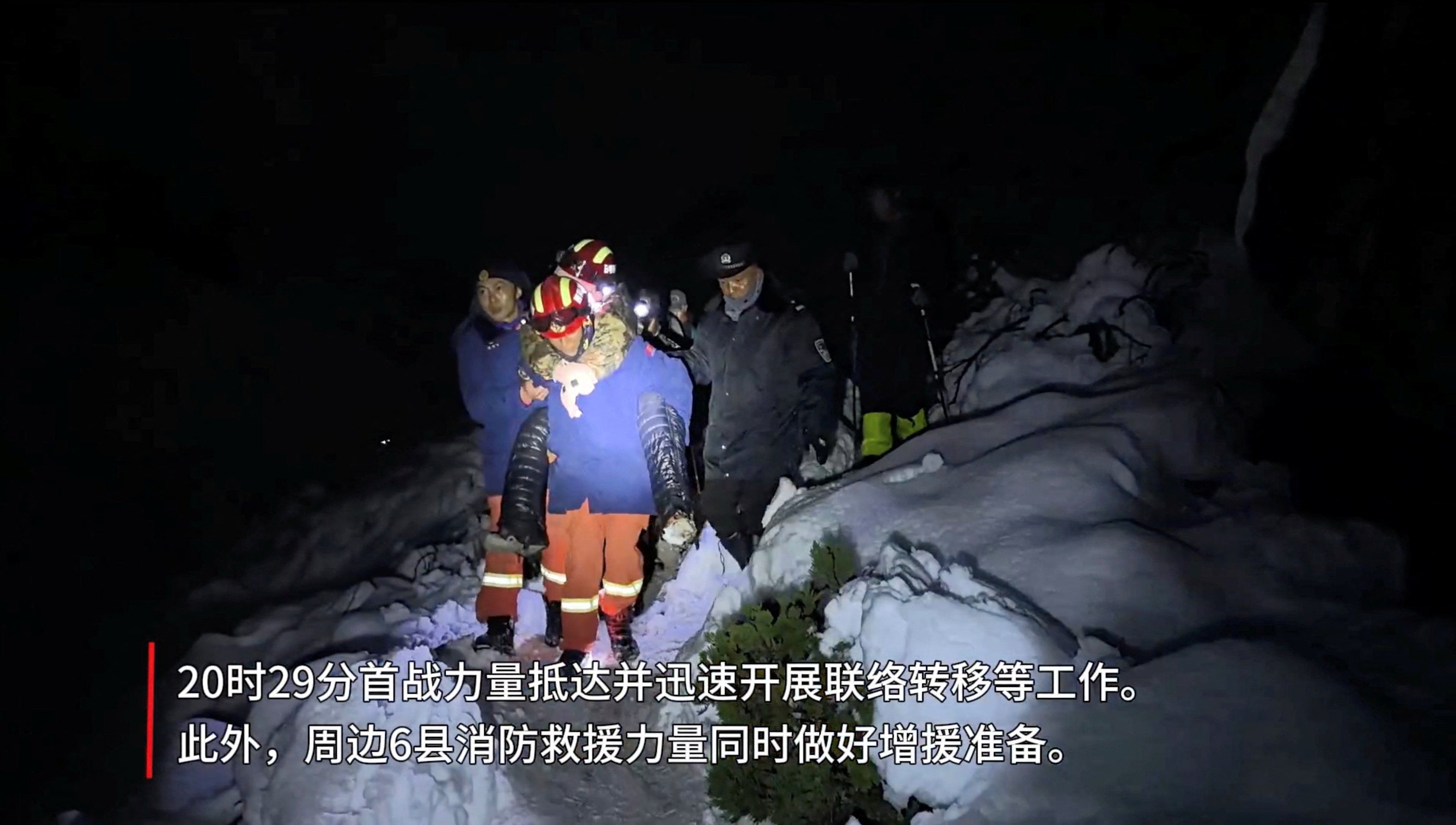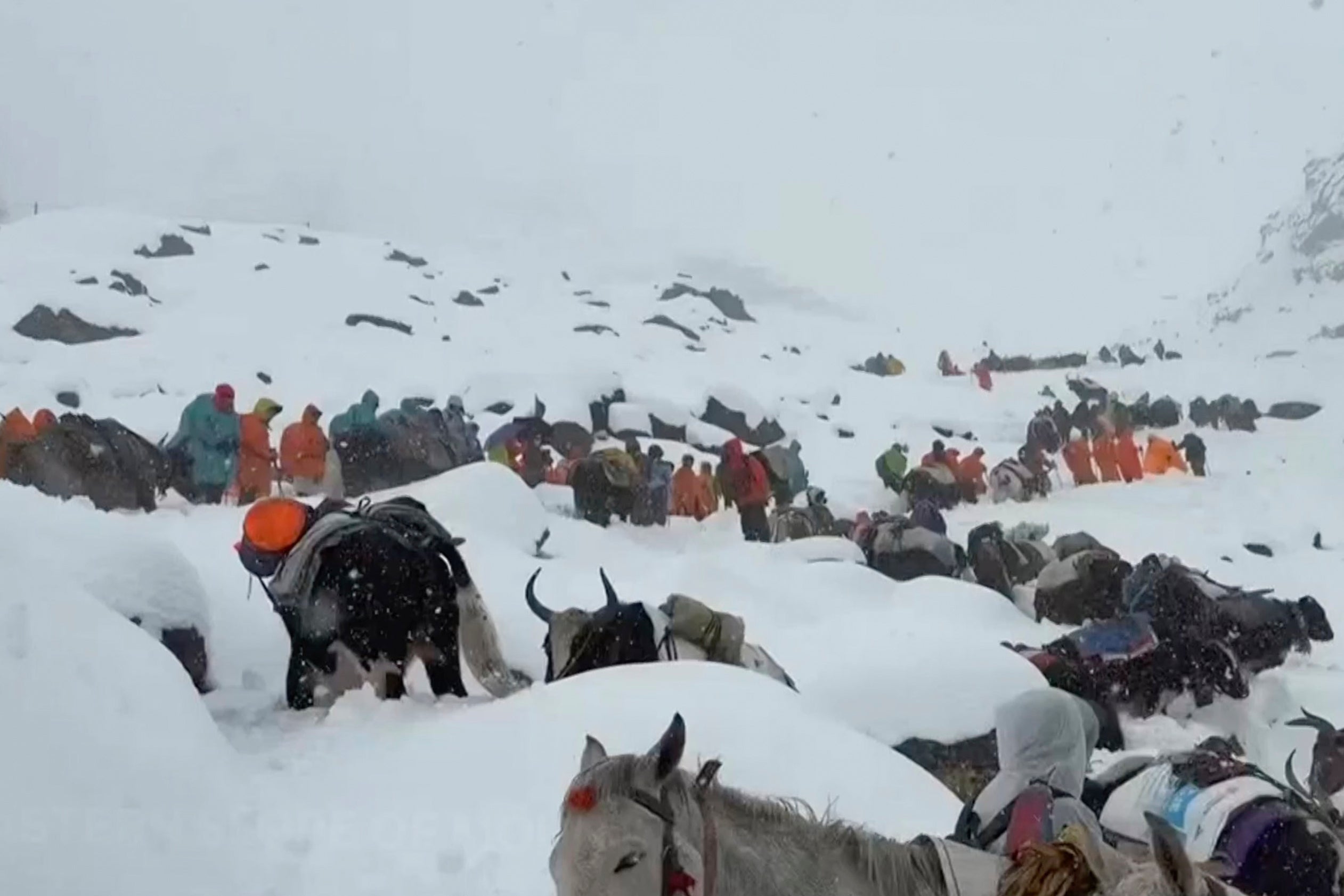All stranded trekkers near Mount Everest’s eastern face in Tibet have been rescued after a massive operation involving local guides, villagers, and officials.
The search-and-rescue mission, one of the largest in the area’s history, was launched after hundreds of hikers were trapped by a rare and intense snowstorm in the remote Karma Valley.
About 900 hikers, guides, and other staff stranded by a weekend snowstorm on the Chinese side of Mount Everest have reached safety, state media said late on Tuesday.
A severe storm struck the area Saturday night, cutting off access to where the hikers were staying in tents at an altitude of more than 4,900m.
The blizzard hit over the weekend, blanketing the high-altitude valley – about 4,200m above sea level – with deep snow. Many hikers were caught off guard when heavy snowfall continued through Saturday, forcing them to dig out tents and camp gear through the night.
By Sunday, about 350 people had been escorted to safety while the remaining 200 were rescued by Tuesday. In total, around 580 trekkers and more than 300 local guides, yak herders, and support workers were evacuated, according to the news agency Xinhua.
Hundreds of hikers were trapped at an elevation of more than 4,900m after the region was hit by heavy snowfall on Friday and Saturday. Mount Everest stands about 8,850m tall.
Survivors described harrowing conditions. One hiker said their group stayed awake in fear as the snow built up around their tents, clearing it every hour and a half to prevent collapse.

Others reported that villagers joined the rescue, many searching for family members who had gone missing in the blizzard.
“On the way, we met our guide’s father, who had come looking for him. That’s when we learned the snow was heavy in the valley, too; villagers, unable to contact their children on the mountain, were extremely worried,” one Chinese trekker said.
A young hiker, nicknamed FeiFei, said she was on a multi-day trek with three friends and a local guide in the Karma Valley when heavy snow on Saturday night buried their camp. “We had to constantly clear the snow from the tents, but I collapsed from exhaustion and my tent got buried,” she told AFP news agency after being brought to safety on Monday.
She added that after two days of walking, during which “firefighters cleared the path using yaks and horses to clear the snow”, the group returned to the rescue centre. On her way down, Ms FeiFei saw dozens of hikers along the way, weakened by hunger or altitude but none in critical condition.

Chen Geshuang, who was part of an 18-member team that was evacuated safely, said: “It happened all too suddenly.”
“All of us are experienced hikers,” Ms Chen, 29, told BBC News. “But this blizzard was still extremely difficult to deal with. I was so lucky to get out. Many people come here to hike during the Golden Week, but this year's snow was exceptional.”
Their guide also said such weather on the eastern slope of Everest was highly unusual, she added.
“It was the most extreme weather I’ve ever faced in all my hiking experiences, without question,” Dong Shuchang, a Chinese trekker, said on Weibo and described the blizzard as a “violent convective snowstorm on the eastern slope” of Everest.
“I looked up in the middle of the night and saw that the snow had nearly covered the top,” said another trekker on Xiaohongshu, according to The Guardian.
“It was the first time I truly felt the fear of being buried alive.”
The severe weather also disrupted expeditions on Cho Oyu, the world’s sixth-highest peak, where a US-led climbing team had to abandon summit plans due to unsafe conditions.
The Karma Valley, once a quiet and little-known route first explored over a century ago, has become increasingly popular with tourists as the Everest region in Tibet grows as a trekking destination. More than half a million people visited the area last year.
Authorities have since closed the Everest region, including the Karma and Rongshar valleys, citing safety risks.
Heavy snow and sub-zero temperatures also hit other parts of western China, leaving at least one hiker dead from hypothermia and altitude sickness.
Hundreds still trapped on Mount Everest as rescuers battle heavy snow
Mount Everest rescue: Race against time to rescue 200 hikers stuck in blizzard
Hundreds rescued after snowstorm traps nearly 1,000 trekkers on Mount Everest
London master’s student who advocated for Tibetans detained during China visit
Bangladesh election favourite vows to return from exile for historic vote
Range Rover stolen in UK turns up three years later in Pakistan







